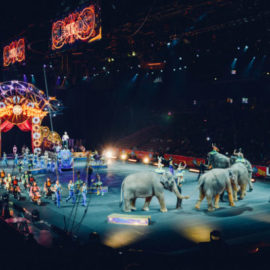

This article is an excerpt from the Shortform book guide to "Managing Transitions" by William Bridges and Susan Bridges. Shortform has the world's best summaries and analyses of books you should be reading.
Like this article? Sign up for a free trial here.
What is William Bridges’s Transition Model? How helpful is this model for businesses undergoing change?
Developed by Bridges, the Bridges Transition Model helps organizations and individuals adapt to organizational and personal change. His book with Susan Bridges, Managing Transitions, goes into further detail on the model.
Keep reading to learn about each stage of William Bridges’s Transition Model.
How to Effectively Manage Transition
There are three phases of transition in the William Bridges’s Transition Model:
- Phase 1: Closing (referred to in the book as “Ending/Losing”). The closing is the first stage of the process when people experience sadness or loss about what is ending.
- Phase 2: The Bridge (referred to in the book as “The Neutral Zone”). The bridge is the second stage when an organization is in between systems and everything feels uncertain.
- Phase 3: Emerging (referred to in the book as “A New Beginning”). Emerging is the final stage of the process when the changes have been implemented and there is widespread buy-in within the organization.
In order to successfully implement changes, organizational leaders must guide their teams through each phase of this transition process intentionally.
(Shortform note: For each stage of transition, the authors outline a different set of management strategies. While the suggested strategies are unique to each phase of the transition process, they all fall under three main themes: planning ahead, leading with empathy, and communicating intentionally. We’ve reorganized the strategies under these categories to highlight common themes.)
Phase 1: Strategies to Manage Closing
William and Susan Bridges explain that the first stage of a transition is the end of whatever came before. To successfully manage a transition, you have to first acknowledge the need for closure to help team members move on from the old way of operating. Only then will they be open to what’s coming next
(Shortform note: Our desire for closure is closely related to our desire for control in the face of uncertainty. Closure has the potential to provide a sense of control in the face of ambiguity that enables us to better process our feelings and move forward instead of perseverating about the past.)
So how can you help people navigate the loss and grief associated with this closing and help them be open to new ways of doing things? The authors recommend multiple strategies that fall under the following themes: planning ahead, leading with empathy, and communicating with intention.
Phase 2: Strategies to Manage the Bridge
In the previous section, we discussed the importance of the first step of managing transition: helping people acknowledge and navigate the loss associated with ending. The next stage of any transition is what the authors refer to as “the neutral zone”—the time period when the organization is in between the old way of doing business and the new. We’ll refer to this stage as the bridge moving forward.
The bridge stage can be short, but depending on the scope of the change, can last for years.
This stage is especially challenging because everything is changing and uncertain and not everyone is on the same page. However, the bridge stage is also full of opportunity. When so much is up in the air, people are more likely to ask questions, experiment, and challenge established workplace patterns and systems. For this reason, the bridge stage is the most creative stage of the transition process.
(Shortform note: In Uncertainty, Mark Runco suggests that creativity isn’t just possible during a period of uncertainty—it depends on uncertainty. When our lives are stable, there’s very little impetus for change or innovation. However, when that stability is threatened, we experience doubt which in turn causes us to contemplate a broader range of possible outcomes that will require us to act in unfamiliar and creative ways.)
Phase 3: Strategies to Manage Emerging
The previous section discussed strategies to effectively manage the tumultuous bridge stage of the transition. After muddling through the bridge stage, organizations have the opportunity for what the authors refer to as a “new beginning.” We’ll call this stage emerging.
William and Susan Bridges emphasize that the emerging stage doesn’t happen the same day that the changes take place. Even though new policies or team configurations have been implemented, it takes time for people to come to terms with the changes. Emerging can’t happen until there’s buy-in from your team. They’ll need to let go of the past, understand and accept the reason for the changes, and implement the changes required.
(Shortform note: Many leaders approach getting team buy-in with a “describe and defend” strategy. In these instances, leaders develop an idea and then sell it to their team as the logical way forward. However, a team is more likely to buy into change when they have had the opportunity to discuss, question, and debate the idea. Including your team from the beginning of the conversation is important for true and long-lasting organizational buy-in.)

———End of Preview———
Like what you just read? Read the rest of the world's best book summary and analysis of William Bridges and Susan Bridges's "Managing Transitions" at Shortform.
Here's what you'll find in our full Managing Transitions summary:
- A guidebook for any leader that wants to survive organizational change
- How to go through the three-step emotional process of transition
- How to help others navigate the loss and grief associated with transition






